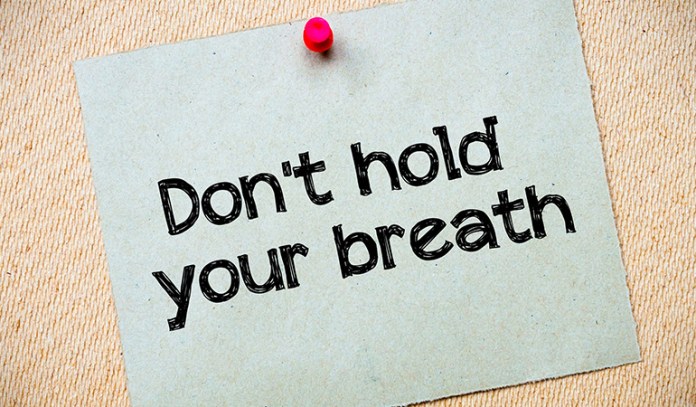Kegel exercises, also known as pelvic floor exercises, can strengthen the muscles of your pelvic floor. These exercises not only benefit women but equally benefit men as well.
With age, your pelvic muscles become weak. This may lead to health issues, sometimes embarrassing ones where you are unable to control your bladder (urinary incontinence). Kegel exercises can save you from humiliating situations at the same time benefit your health.
Kegel exercises require patience and like any other form of exercise, these exercises should also be practiced the right way. Failing to do so can cause adverse health effects and may not have any effect on issues like urinary incontinence.
If you are practicing kegel exercises, make sure you aren’t making any of these common mistakes.
1. Holding The Breath

Kegel exercises require you to hold and squeeze your pelvic muscles. This is part of the technique. However, many make the mistake of holding even their breath. This is not right.
It is important to keep breathing normally as you squeeze and lift your pelvic muscles. Try not to hold your breath or change your regular breathing pattern. Regular breathing while squeezing your muscles indicates that you can control your bladder even when you cough or sneeze if you have urinary incontinence.
2. Ignoring To Lift After The Squeeze

Most people are all in for the squeeze but, often, they forget that kegel exercises require squeezing and lifting. Most times, the lift is forgotten. It is important to squeeze the pelvic floor muscles and lift them inwards.
If you have not been doing the lift, you know why your kegel exercises may not have given you desired results.
The correct pelvic floor exercise requires you to lift inward and squeeze the pelvic floor muscles in and around the three pelvic openings – the urethra (urine tube), vagina, and anus.
3. Trying Too Hard To Reach Goals

Too much of anything is not good for nothing. The same goes even with kegel exercises. If you are doing too many kegel exercises – more than what you are required to do – then, you are probably overworking your pelvic floor muscles, which is not going to fetch you the desired results.
Too much of kegel exercises can cause muscle weakness and can probably do more harm than good to the pelvic muscles.
4. Squeezing The Buttock And Thigh Muscles

Your pelvic floor muscles do not include the rear end muscles – the buttocks. However, a lot of us are under the impression that squeezing or working our buttocks is part of kegel exercising.
This, however, is not true. Instead, the buttock or rear end muscles are supposed to be relaxed during the exercises. Similarly, some squeeze the thigh muscles and think that kegel exercises are working, when they may not. So, avoid working the thighs and buttocks while performing kegel exercises.
5. Continuing The Exercise Without Desired Results

Patience is a virtue but too much of it may not be what you need for kegel exercises. It is okay to wait for a week or two to observe some changes with the right kegel exercises. However, most people wait for way too long for the desired results.
If you haven’t observed any considerable change with kegel exercises over a period of two weeks or more, then either you are not performing them correctly or these exercises are not meant for your condition. This is where appropriate training comes into play.
If you experience any pain, discomfort, absolutely no change in urinary incontinence, or any other negative changes, it is important to consult your health provider without delay. In fact, if you are starting a new fitness routine, it is always better to do it under the guidance of a certified trainer.





